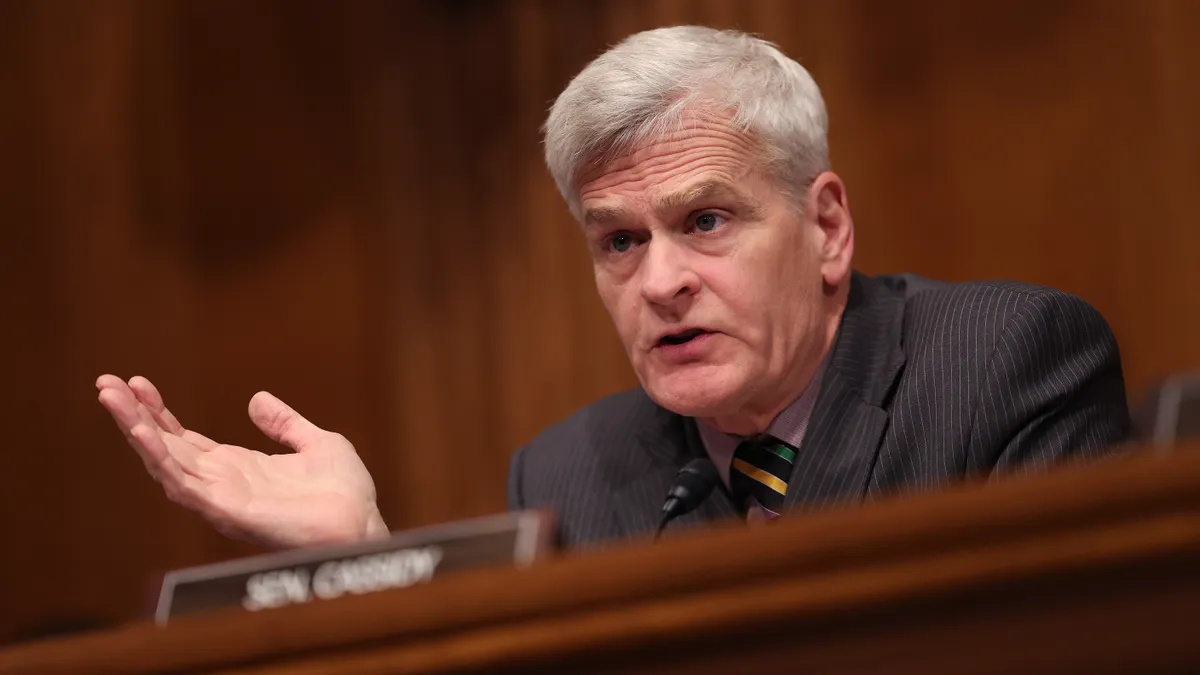As the Trump administration changes the federal approach to diversity, equity and inclusion policy and takes aim at employers’ use of certain inclusive programs, approaches to pay equity could hang in the balance.
“The executive orders have ruffled feathers and have … got people thinking long and hard about what they should do about workplace policies, particularly DEI policies,” Ruth Thomas, pay equity strategist at Payscale, a compensation management company, told HR Dive.
But, Thomas says, pay equity remains “rooted in a lot of laws that are unaffected by the executive orders.” Pay equity is covered by the Equal Pay Act of 1963 and Title VII of the Civil Rights Act of 1964. Legislation in more than 40 states also addresses pay equity, equal pay or pay transparency, she said.
“Regardless of the changes in the federal DEI policies, the law still stands that you should be paying people equally,” Thomas said. “The main shift is there's the potential that if you're only remediating pay on the basis of protected class, that could come under scrutiny under the new view of DEI, whereas a good pay equity audit would consider everybody equally anyway.”
For example, when performing a pay equity analysis at a retail organization where there’s a heavily prevalent female workforce, white men could show up as being paid less because there are fewer of them, and a company would need to remediate the men’s pay in that situation, Thomas said.
Thomas said it’s important to recognize the difference between the unadjusted or uncontrolled gender pay gap, which is most commonly cited and reflects opportunity gaps, and the adjusted gender pay gap. The latter, Thomas explained, compares workers in the same jobs with the same characteristics, knowledge, skills and experience.
DEI policies, she said, often focus on the individual, but should maybe focus on organizational changes instead given the slow rate of progress in narrowing the adjusted pay gap. That is evident in the differences in opportunity afforded caregivers, Thomas said.
The adjusted gender pay gap shows that women earn 99 cents per dollar that a man makes, while the uncontrolled gap puts the gap at 83 cents per dollar, according to Payscale’s Gender Pay Gap report, which was released last month. For women with children, the gap is 73 cents for every dollar men with children make.
“One of the most important influencing factors of the opportunity gap … is the fact that the world of work is essentially built on the assumption that you can be present in work for, you know, five days a week,” Thomas said. “It's not built for people who potentially have caring responsibilities. And until we address that, ultimately, there's always going to be an element of imbalance.”
Deborah Vagins, national campaign director for Equal Rights Advocates and director of Equal Pay Today, said the Trump administration’s executive orders discouraging DEI practices will reduce opportunities for women and workers of color to access better jobs, which will ultimately increase pay disparities.
“This is an incredibly dangerous prospect for women's advancement in the workforce, and it threatens reversal of decades of workplace integration and access to better jobs in nontraditional fields,” Vagins said. “We face the real danger of continuing to widen the pay gap.”
Companies are afraid of running afoul of the new administration and are changing DEI policies, Vagins said. But they should remember there are legal risks for doing so, she said, and they could face allegations of discriminatory intent if they roll back DEI programs that created a more diverse candidate pool, for example. There will be Title VII challenges, she predicted.
“The elimination of DEI initiatives isn't just about diversity training and hiring practices, it is about dismantling the very tools that we use to identify and address the widening pay gap or segregation into lower paid jobs,” Vagins said. “It's about reinstating preferential treatment for those who've always had it through connections or pedigree or systemic advantages.”
Vagins recommended that employers continue to conduct pay equity audits and salary analyses, to post wages on job ads and to ban the consideration of salary history to address implicit bias — the use of which can increase wage gaps.
“They can still take action to reduce all of those practices, and it has nothing to do with the labeling of the program,” Vagins said.





















